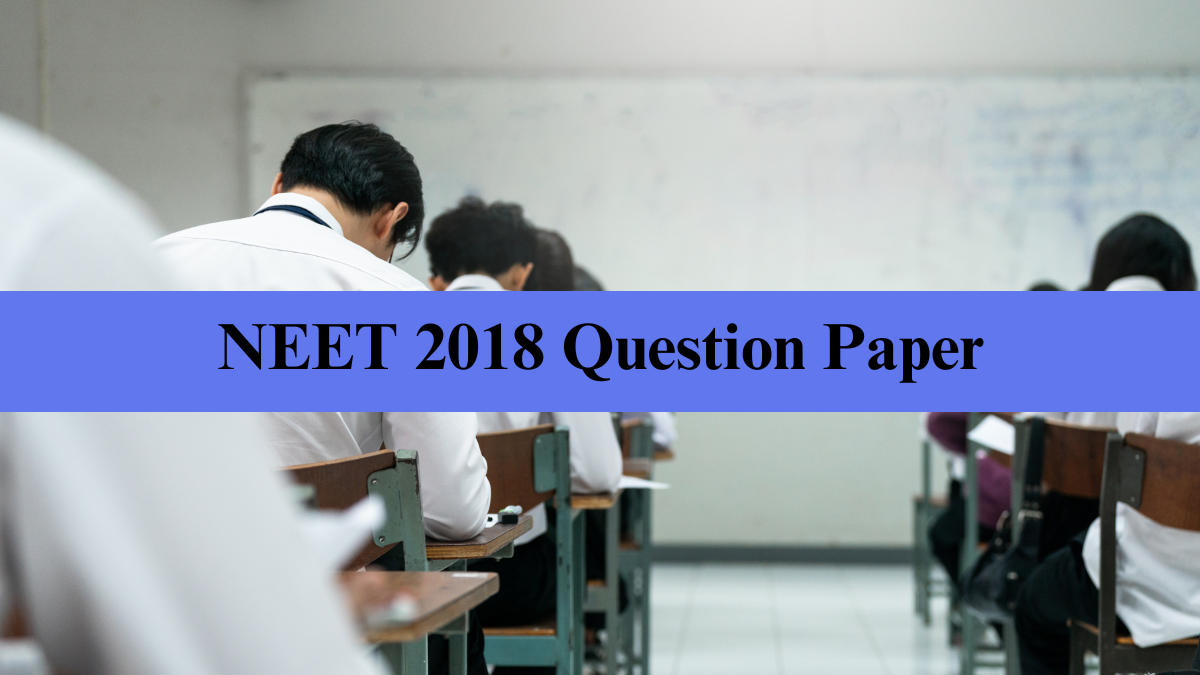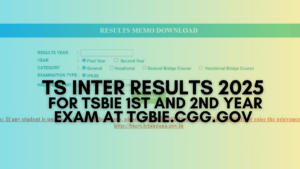Table of Contents
Practicing the previous year’s questions is a great resource for students who are preparing for the NEET UG Examination. The NEET 2018 Question Paper with solutions allows students to learn about paper patterns, difficulty levels, and types of questions more efficiently. As per the NEET UG 2018 Paper Analysis, the overall difficulty level of the exam was moderate. We have compiled the NEET Question papers 2018 for all sets on this page in downloadable PDF format to access them more easily.
NEET 2018 Question Paper by NTA
The National Eligibility Entrance Test (NEET) Undergraduate (UG) is an all-India level medical entrance test for candidates pursuing admission into MBBS and BDS programs at colleges across the country. To excel in the preparation of the upcoming NEET exam, you must deliberately focus on practicing mock tests and previous year questions on a regular basis.
Although there are several changes in the NEET Syllabus and exam pattern, the NEET Previous Year Question paper will help you in understanding real exam-like questions, time constraints, and marking schemes. It also allows a strategic approach to solving the paper for maximum results.
NTA NEET Question Paper 2018 Highlights
Every year, the National Testing Agency (NTA) tentatively administers the NEET UG Examination in the first week of May. In 2028, the exam was held on May 6, 2018. The question paper consisted of 180 multiple-choice questions. Students must attempt all 180 questions. There are three sections: Physics, Chemistry, and Biology (Zoology + Botany). For each correct response, you will be awarded four marks, while each incorrect answer will result in one mark deducted.
| Parameters | Details |
| Name of examination | NEET UG 2018 |
| Conducting body | National Testing Agency (NTA) |
| Exam held on | May 6, 2018. |
| Subjects | Physics, Chemistry, and Biology (Zoology + Botany) |
| Total Questions | 180 |
| Total Marks | 720 |
| Negative Marking | Yes |
| Correct Answers | +4 Marks will be added |
| Incorrect Answers | -1 Marks will be deducted |
NEET Question Paper 2018 PDF Download with Answers
National Testing Agency releases the NEET UG 2018 Question paper with answer key on its official website after the exam is successfully conducted. It will help you understand the nature of the questions given and the time required to answer them. In the table below, you will find the NEET 2018 question paper with solutions in Free PDF format. Download them and ace your NEET preparation.
| NEET 2018 Question Papers Set wise | NEET 2018 question paper pdf download | Answer Key |
| NEET 2018 question paper code AA | Download PDF | Download PDF |
| NEET 2018 question paper code BB | Download PDF | Download PDF |
| NEET 2018 question paper code CC | Download PDF | Download PDF |
| NEET 2018 question paper code DD | Download PDF | Download PDF |
| NEET 2018 question paper code EE | Download PDF | Download PDF |
| NEET 2018 question paper code FF | Download PDF | Download PDF |
| NEET 2018 question paper code GG | Download PDF | Download PDF |
| NEET 2018 question paper code HH | Download PDF | Download PDF |
| NEET 2018 question paper code KK | Download PDF | Download PDF |
| NEET 2018 question paper code LL | Download PDF | Download PDF |
| NEET 2018 question paper code MM | Download PDF | Download PDF |
| NEET 2018 question paper code NN | Download PDF | Download PDF |
| NEET 2018 question paper code PP | Download PDF | Download PDF |
| NEET 2018 question paper code QQ | Download PDF | Download PDF |
| NEET 2018 question paper code RR | Download PDF | Download PDF |
| NEET 2018 question paper code SS | Download PDF | Download PDF |
| NEET 2018 question paper code WW | Download PDF | Download PDF |
| NEET 2018 question paper code XX | Download PDF | Download PDF |
| NEET 2018 question paper code YY | Download PDF | Download PDF |
| NEET 2018 question paper code ZZ | Download PDF | Download PDF |
NEET 2018 Question Paper Analysis
Apart from the NEET 2018 Question papers, knowing its expert’s analysis is also very crucial for future NEET aspirants. As per the experts’ review, the NEET 2018 Paper was simple to moderate, with 170 questions based on NCERT and only 10 tough questions that interlinked two concepts.
In the paper, out of the 180 questions, 110 were easy, 45 were moderately challenging, and 25 were of high difficulty. Biology was thought to be the easiest of all, Chemistry was easy to control, and students found Physics to be the most challenging. Let’s take a subject-wise analysis below.
NEET Biology Paper Analysis: The biology part was the easiest of the three. However, it was a lengthy segment. 44 11th-grade syllabus questions and 46 12th-grade syllabus questions were asked. This section contained 48 simple questions, 33 moderately difficult questions, and 9 hard questions. However, there were fewer application-related questions in this category than the prior year. The majority of the concept-based questions were taken directly from NCERT.
NEET Physics Paper Analysis: Out of the three, this was the most difficult. But this section was a little long. There were 24 questions from the 12th-grade syllabus and 21 from the 11th-grade syllabus. This section included 34 simple questions, 9 medium-level questions, and two tough questions. In addition, there were other difficulties that required computation.
NEET Chemistry Paper Analysis: In the Chemistry Section, twenty questions from the eleventh grade curriculum and twenty from the twelfth-grade syllabus were asked. This section has one tough question, 20 confusing questions, and 24 straightforward questions. The majority of the questions revolved around simple concepts.
Topic Wise Weightage in NEET Question Paper 2018
The NEET Question paper 2018 included relatively comparable questions and difficulty levels to the NEET 2017. Long calculative questions in Physics and Chemistry made things difficult for candidates. A few easy questions in Physics necessitated complex calculations. The Biology portion was straightforward this year. It comprised a few questions from the NCERT syllabus that addressed both the Class 11 and Class 12 standards. Check subject wise and topic wise NEET 2028 Question paper in the table below.
Physics Topics wise Weightage
| Name of the Unit | Name of the Chapter | Weightage |
| Physical-world and measurement | Units and Measurements Physical World | 2.00% |
| Kinematics | Motion in a Plane Motion in a Straight Line | 3.00% |
| Laws of Motion | Laws of Motion | 3.00% |
| Work, Energy and Power | Work, Energy, and Power | 4.00% |
| The Motion of System of Particles and Rigid Body | System of Particles and Rotational Motion | 5.00% |
| Gravitation | Gravitation | 2.00% |
| Properties of Bulk Matter | Mechanical Properties of Solids Thermal Properties of Matter Mechanical Properties of Fluids |
3.00% |
| Thermodynamics | Thermodynamics | 9.00% |
| Kinetic Theory of Gases | Kinetic Theory | 3.00% |
| Oscillation & Waves | Oscillation Waves | 3.00% |
| Electrostatic Potential and Capacitance | Electric Charges and Fields Electrostatic Potential and Capacitance | 9.00% |
| Current Electricity | Current Electricity | 8.00% |
| Magnetic Effects of Current and Magnetism | Magnetism and Matter Moving Charges and Magnetism |
5.00% |
| Electromagnetic Induction | Alternating Current Electromagnetic Induction | 8.00% |
| Electromagnetic Waves | Electromagnetic Waves | 5.00% |
| Optics | Ray Optics and Optical Instruments Wave Optics |
10.00% |
| Dual Nature of Matter and Radiation | Dual Nature of Matter and Radiation | 6.00% |
| Atoms and Nuclei | Atoms and Nuclei | 3.00% |
| Electronic Devices | Semiconductor Electronics | 9.00% |
Chemistry Topic Wise Weightage
| Topics | Number of questions from each topic |
| Alcohols | 1 |
| Aromatic Compounds | 4 |
| atomic structure | 1 |
| Biomolecules | 2 |
| Carboxylic Acids | 1 |
| Chemical Bonding | 1 |
| Chemical Equilibrium | 1 |
| Chemical Kinetics | 2 |
| Coordination Compounds | 3 |
| D Block | 2 |
| Electrochemistry | 1 |
| Enviromental Chemistry | 1 |
| Gaseous State | 2 |
| GOC | 2 |
| Haloalkane | 1 |
| Hydrocarbons | 2 |
| Ionic Equilibrium | 2 |
| Metallurgy | 1 |
| Mole Concept | 2 |
| P Block | 5 |
| periodic table | 1 |
| Polymer | 1 |
| Redox Reactions | 1 |
| S Block | 2 |
| solid state | 1 |
| Surface Chemistry | 1 |
| Thermodynamics | 1 |
Zoology Topic Wise Weightage
| Topics | Number of questions from each topic |
| Animal Classification | 4 |
| Application Biology | 3 |
| Biology in Human welfare | 4 |
| Biomolecules | 1 |
| Evolution | 3 |
| Human Physiology | 15 |
| Human Reproduction | 5 |
| Structural Organisation of Plant and Animals | 1 |
Botany Topic Wise Weightage
| Topics | Number of questions from each topic |
| Application Biology | 1 |
| Biological classification | 6 |
| Cell Biology | 5 |
| Ecology | 12 |
| Genetics | 11 |
| Living World | 1 |
| Plant Physiology | 8 |
| Reproduction in Organism | 1 |
| Reproduction in Plants | 4 |
| Structural Organisation of Plant and Animals | 5 |



 NEET UG 2025: Is NEET Previous years Que...
NEET UG 2025: Is NEET Previous years Que...
 JEE Mains Session 2 Result 2025 OUT, Sco...
JEE Mains Session 2 Result 2025 OUT, Sco...
 TS Inter Results 2025 Date for TSBIE 1st...
TS Inter Results 2025 Date for TSBIE 1st...



